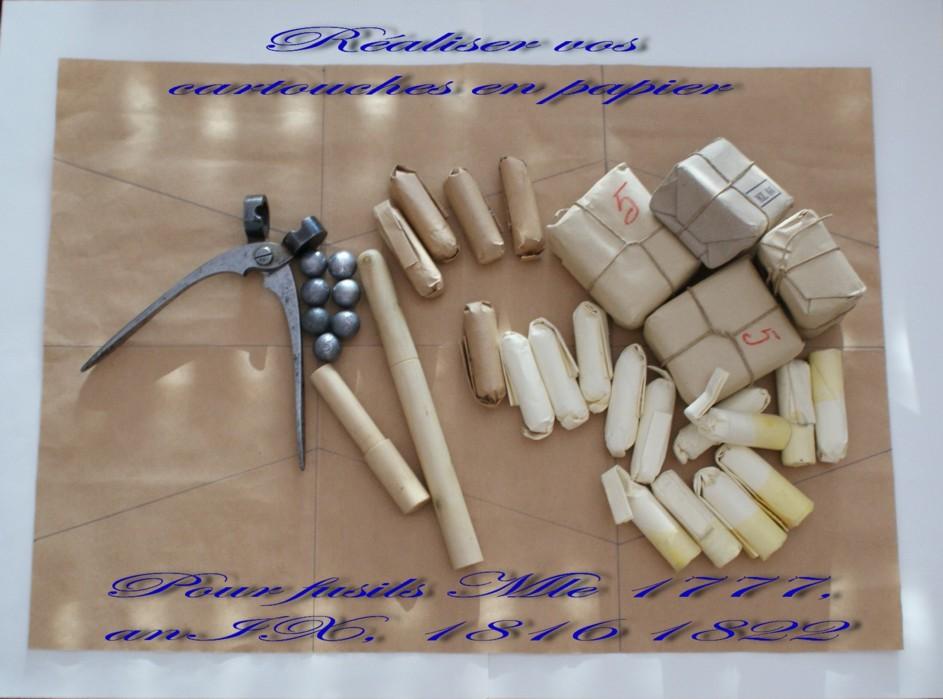

Note on the manufacture of the cartridges of Ammunition for Rifles (Flint &t Percussion)
Calibre of XVI “A la livre” of Paris.
---oooOOOooo---
History and old Documentations
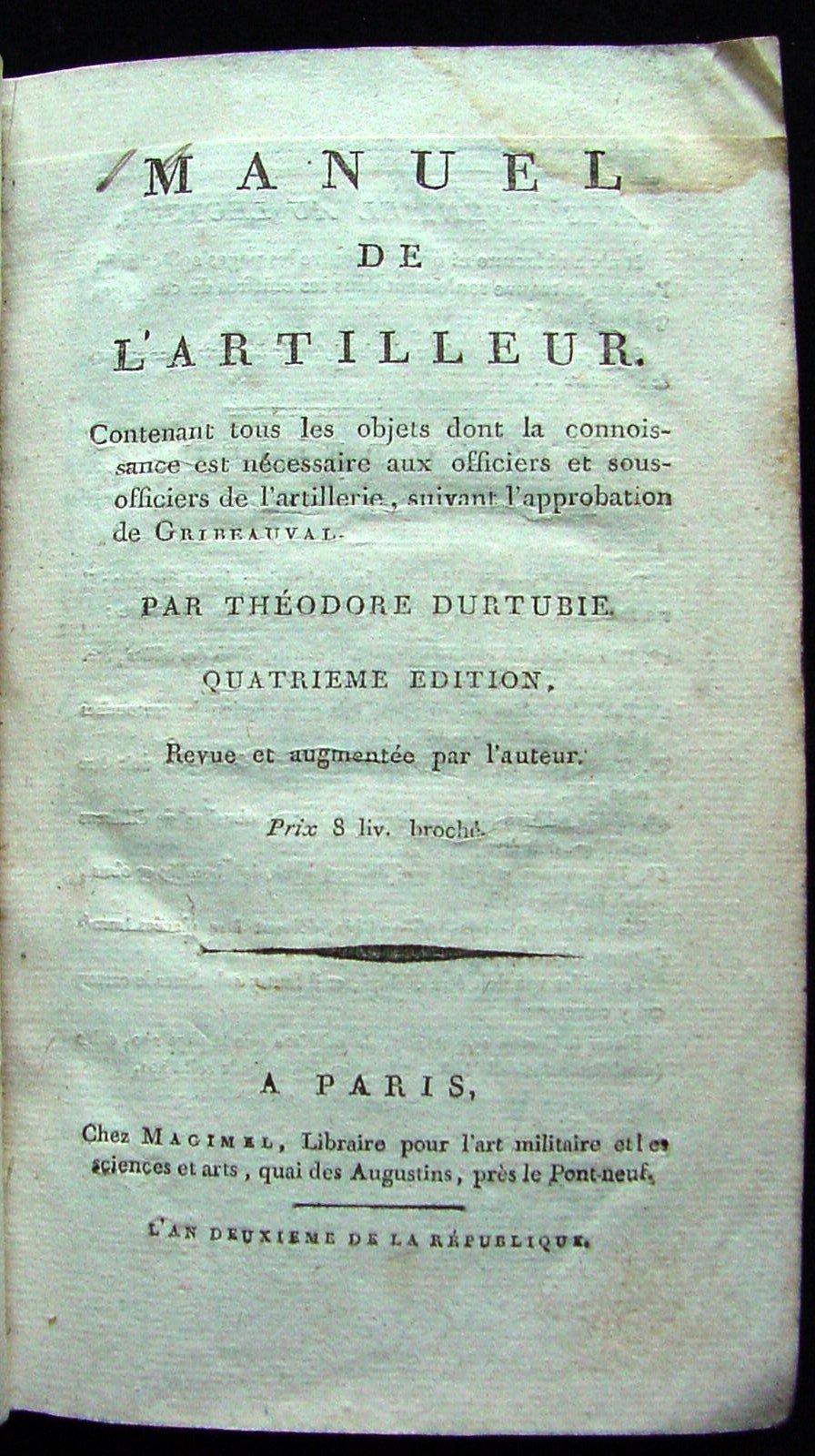
For better understanding the context of measurements which were used under “Ancien Régime” and at the beginning of the French revolution.
A small page of recall to this one:
One point is 1/1728 = 0,188 mm
One line is 1/144 = 2,256 mm
One inch is 1/12 = 2,704 cm
One foot of Roy is 1 = 32,484 cm
One “toise” soit 6 = 1,949 m
This until 1799 or the decimal meter was given with being equal to 443,296 lines of Roy.
In measurements of weight the “Livre” of Paris made 489 gr.
Example: one indicated with a certain military Humor Rifle 1777 of “Clarinet of 5 feet to the calibre of 7 lines and 9 points”. {Gauge of the barrel 17,5 mm (7 lines 9 points) shoot a ball of 16,5mm (7 lines and 4points)}.
To make the drawing of cartridges use a typing paper sheet of 80 grams format 21x29,7 - draw 4 forms corresponding to cutting here
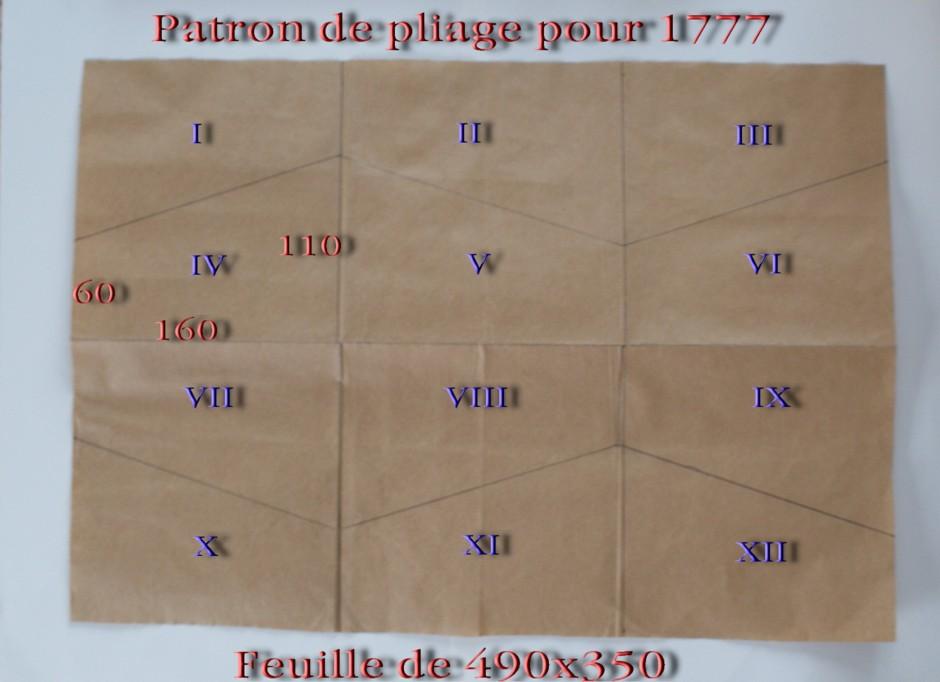

To make to it cartridge paper, to roll paper well on the ball by using the hard wood chuck.
Dimensions of the chuck L = 19cm X dia =17,3 cm
For a ball of 17,5
To roll paper well while tightening well - to paste the part at a peak of paper.
To close paper well by compressing it on the part of wood to add adhesive to consolidate the point of the cartridge.
Manufacture of the “room” with powder.
For this realization a chuck is necessary as for the cartridge.
The dimensions of paper can vary according to the quantity of powder used.
Width 7cm X 11,5cm - point cut in bevel for joining.
The head of the chuck presents a cavity to fold up paper
To roll paper:
(To fold up the surplus of paper on the head of the chuck)
Completion and loading of the room with powder. To fix before folding of paper with a piece of paper standard “sopalin”, it to pack, that well the crushing of the paper cylinder avoids.
The cartridge and the room with powder, before its introduction into the cylinder.
With paper nitrated in order to be used complete for the loading of rifle
Loading: to pack the room with powder in the cylinder of the cartridge.
With this intention to use the chuck of manufacture of the cartridge to pack the room with powder on the ball (not to forget the piece of “sopalin” between the two)
When you finished packing the powder, to fold the remainder of paper to close the cartridge of ammunition, then to test your cartridge, this one must return in the barrel to “fatty” friction.
To stick the strip counters the body of the Cartridge.
Unit of the material and realization of the ammunition (5 grams of powder with Mousquet)
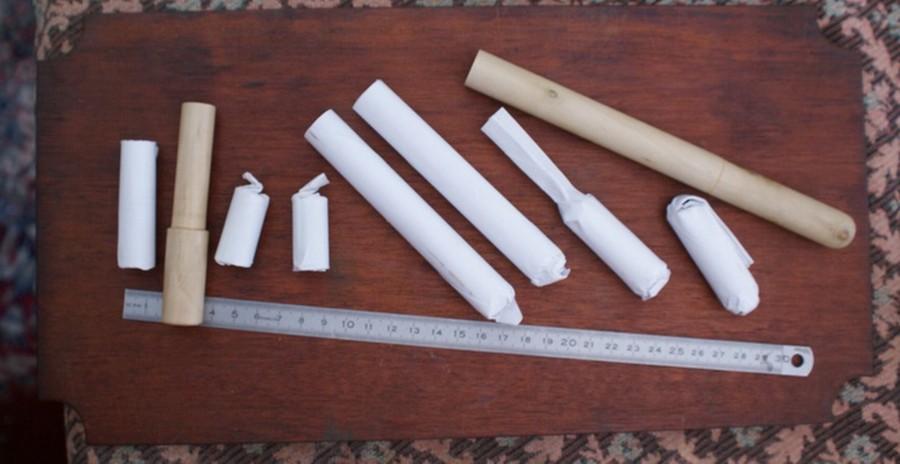
To check if the cartridge were well made by making it pass to the mouth of a barrel of rifle
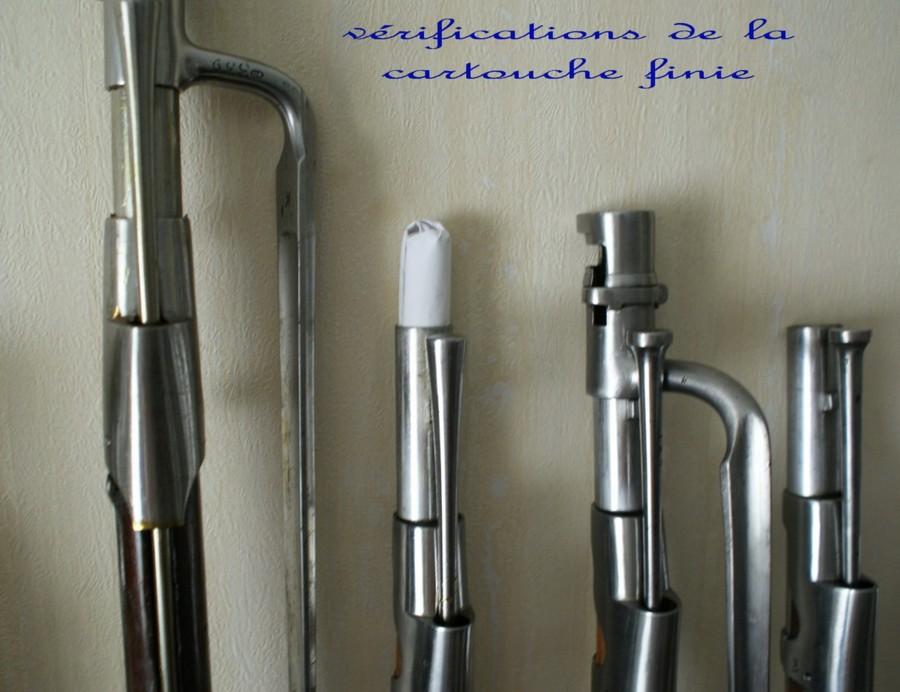
grenadier voltigeur 1822 t Bis
1777 1816 T
According to the load of the Ammunition of Rifle one obtains dimensions different of length of the ammunition.
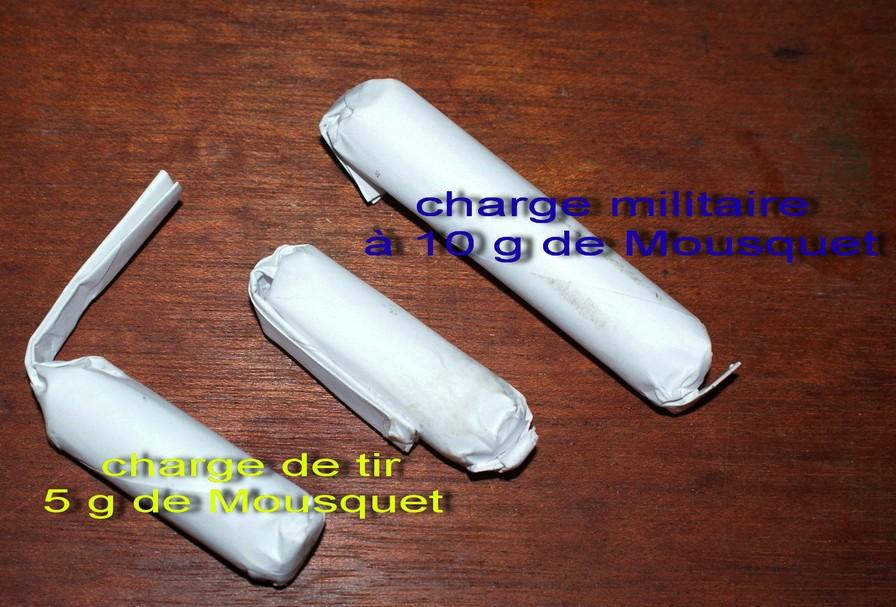
To limit to the loads of shooting per safety measure the rules to be observed are not to smoke or bring any heat source being likely to put your life in danger by a presence of a sharp flame.
To work out your ammunition while being alone - not to let to you distract - your life is in plays – prudence.
For those which further wish outward journey in this realization you can make the packages of cartridges by using a standard paper kraft recut example below.
Adaptable to the ammunition of the time 1777 - except that the cartridges were parcelled out by fortnight - for a question practices one can parcel out them by 6.
This type of packing having appeared much later with rifles with percussions T and T (a) 1816 & 22
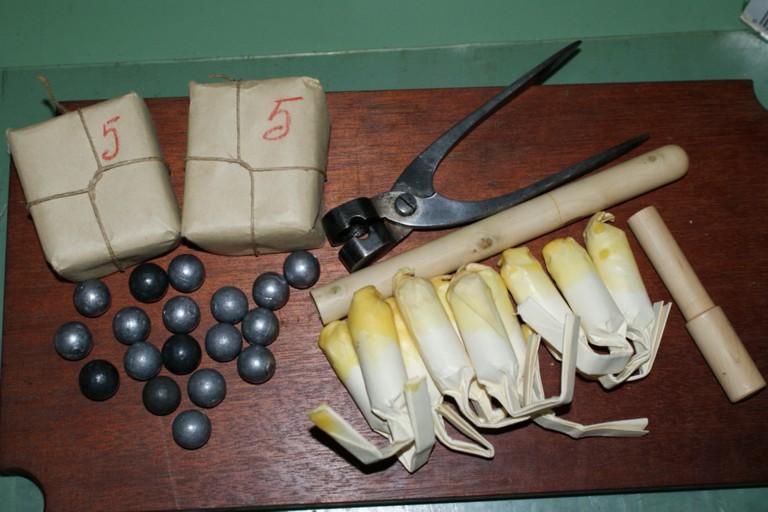
Cartridges of Ammunition treated with yellow wax.
The weapons of Ancien Régime like the 1777 like all the types of infantry or "Voltigeur" are with the calibre of 17,5mm and use a ball of 16,5mm - thereafter rifle Model 1816 and 1822, the last of the series of system 1777 will be with the gauge of 18mm and will use a ball of gauge 17,5 mm (either sixteen with the “livre” of Paris) (certain of N°1 rifle and an IX, were modified by the setting to the standards of 1830, boring of the barrel to the gauge of 18 and put at length of “Voltigeur” and will take the name of N° 1).
The current counterparts are with calibre 69/100 of English inch is 17,5 mm.
This article is carried out for the gunners with the weapon (or the weapons) old(S) French with flintlock and percussions of calibre 17,5 & 18 mm.
It is a complement with old documentation of July 1973 also published in August 1981 – In homage to the people who wrote them at this time over the 1777, manufacture of her cartridges and with the shooting. (Ref. Gazette of the Weapons)
In a friendly way with all gunners and collectors Beautiful French weapons.
@GLT 08
Information on the powder loads.
To preferably use powder called to “Mousquet”. At the time of these weapons, the load was equivalent to one fortieth or one forty fifth of the “livre” of Paris (489grams).
That gave from 10 to 12 grams for a cartridge provided with a ball of 16,5mm – In our Modern times the value of our PN Nationale constrained us with prudence by reducing the loads for the shooting out of target, with 5 grams for a ball of 17,5 – one can go up without problems to 6 grams.
But with old rifles not to take useless risks while wanting to play sorcerer's apprentices.
Appendix 1
Boards with the tools
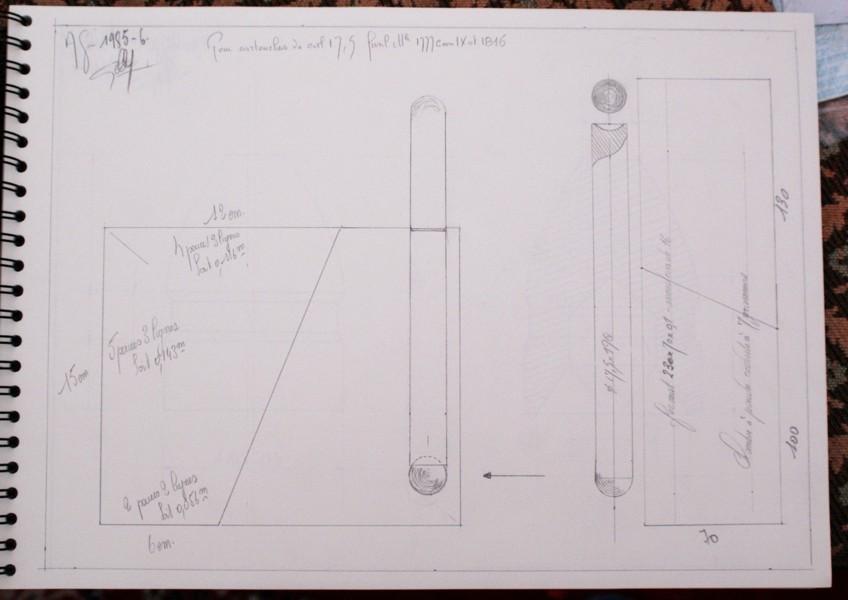
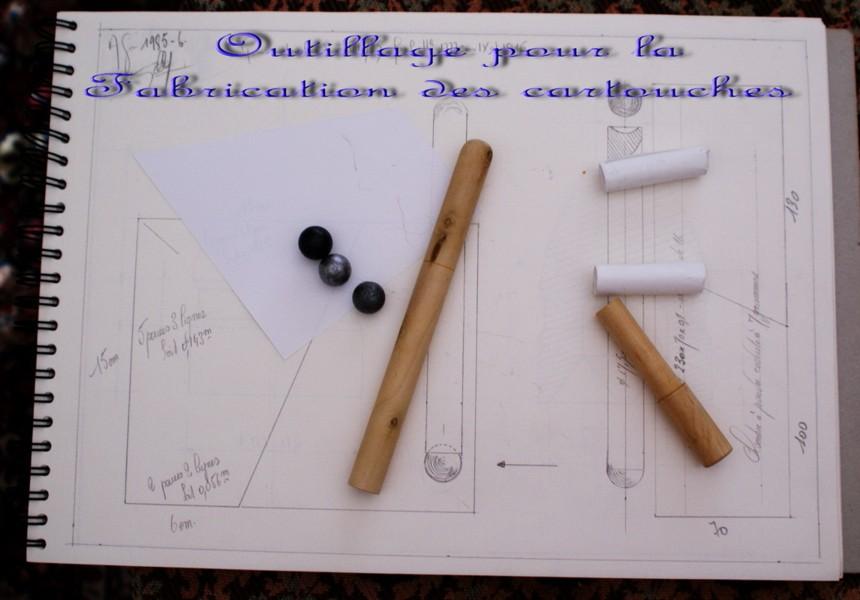
Realized with the assistance of old documents.
Technical support: “@lain of www.littlegun.be”.
Private credit photographs & drawings @glt08 reserved ww.littlegun.be
copyright ww.littlegun.be - @glt08